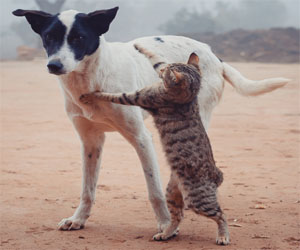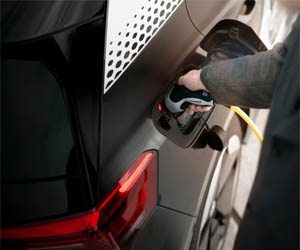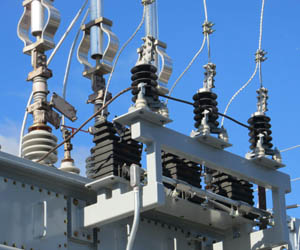


Transforming Trash Into Valuable Resources

As the world faces the dual challenges of managing waste and reducing our dependence on fossil fuels, waste-to-fuel generation methods have emerged as an innovative and promising solution. These methods offer a sustainable approach to waste management while simultaneously providing alternative sources of energy, contributing to a cleaner and more sustainable future.
1. Conversion Of Organic Waste To Biogas
One of the prominent waste-to-fuel generation methods involves the conversion of organic waste into biogas through a process called anaerobic digestion. Organic waste, such as food scraps and agricultural residues, is broken down by microorganisms in the absence of oxygen, producing biogas that is rich in methane. This biogas can be used as a renewable energy source for heating, electricity generation, and as a vehicle fuel. The byproduct of this process is a nutrient-rich organic fertilizer, making it a win-win solution for waste management and energy production.
2. Biomass-To-Biofuel Conversion
Biomass, including wood, crop residues, and dedicated energy crops, can be converted into biofuels through various processes such as pyrolysis, gasification, and biochemical conversion. Pyrolysis involves heating biomass in the absence of oxygen to produce bio-oil, which can be further refined into transportation fuels. Gasification converts biomass into a synthesis gas that can be used to produce fuels like ethanol and synthetic diesel. Biochemical conversion uses enzymes and microorganisms to break down biomass into biofuels like ethanol and biodiesel.
3. Plastics-To-Fuel Technologies
Plastics, which are notoriously challenging to recycle, can be transformed into valuable fuels using pyrolysis and depolymerization methods. Pyrolysis breaks down plastics into liquid fuel, gas, and char, which can be used as fuel or chemical feedstocks. Depolymerization processes chemically break down plastics into their constituent monomers, which can then be used to produce new plastics or fuels.
4. Municipal Solid Waste-To-Energy (MSW-To-Energy)
Municipal solid waste (MSW) is a diverse mixture of materials, and waste-to-energy facilities can convert this waste into electricity and heat through incineration or gasification. Incineration burns the waste at high temperatures, producing heat that is used to generate electricity. Gasification converts MSW into a synthesis gas that can be used for electricity generation or further refined into transportation fuels.
5. Algae-Based Biofuel Production
Algae-based biofuel production is an emerging waste-to-fuel method that harnesses the rapid growth of algae. Algae can be cultivated in wastewater or on non-arable land, and they capture carbon dioxide during growth. This biomass can be processed to produce biofuels like biodiesel and biogas, providing an eco-friendly solution for waste management and clean energy generation.
Challenges And Considerations
While waste-to-fuel generation methods hold great promise, they are not without challenges. These include technical and economic barriers, ensuring sustainable feedstock supply, and addressing concerns about emissions and environmental impact. Careful planning, innovative technologies, and sound regulations are essential to maximize the benefits of these methods while mitigating potential drawbacks.
Waste-to-fuel generation methods are at the forefront of sustainable waste management and clean energy production. These innovative processes provide environmentally responsible ways to transform waste materials into valuable fuels, reducing the burden on landfills and diminishing our dependence on fossil fuels. Continued research, investment, and the adoption of these technologies will play a crucial role in creating a more sustainable and greener future.


Separating Fact From Fiction
 One of the most frequently cited quatrains related to an end-of-the-world scenario is Quatrain 72 from Century 10, which reads:
One of the most frequently cited quatrains related to an end-of-the-world scenario is Quatrain 72 from Century 10, which reads:
"The year 1999, seventh month,
From the sky will come a great King of Terror:
To bring back to life the great King of the Mongols,
Before and after, Mars to reign by good luck."
This quatrain has been linked to a variety of doomsday scenarios, including fears of an asteroid impact, a nuclear apocalypse, or even an extraterrestrial invasion. However, as the year 1999 came and went without the prophesied catastrophe, it became evident that Nostradamus' predictions should not be taken as literal forecasts of the end of the world.
Nostradamus himself wrote in cryptic and metaphorical language, making it difficult to attribute specific dates and events to his quatrains with certainty. His quatrains often relied on symbolic imagery and allegory, which leaves considerable room for interpretation. This ambiguity, combined with the allure of doomsday scenarios, has led to post-event retrofitting, where events are interpreted to fit Nostradamus' verses after they occur, rather than the other way around.
The concept of the end of the world has fascinated humans for millennia, and Nostradamus is not the only figure whose writings have been scrutinized for signs of impending doom. Believers in doomsday predictions often rely on selective interpretation, pointing to a few quatrains that seem to match their concerns while neglecting the vast majority that do not.
A Sustainable Revolution
 Key Components:
Key Components:
The green energy transformation encompasses a range of sustainable technologies and practices, including but not limited to:
Renewable Energy: The use of renewable sources like wind, solar, hydro, and geothermal power to generate electricity. These sources are abundant and produce minimal environmental impact.
Energy Efficiency: Implementing energy-efficient technologies and practices to reduce energy consumption and waste. This includes energy-efficient appliances, building designs, and transportation solutions.
Electric Vehicles: The shift toward electric vehicles powered by clean energy sources, reducing greenhouse gas emissions in the transportation sector.
Sustainable Practices: Encouraging sustainable practices in agriculture, industry, and everyday life to minimize resource consumption and environmental harm.
Economic And Environmental Benefits: The green energy transformation brings forth numerous economic and environmental benefits. It creates jobs and fosters economic growth, while simultaneously reducing energy costs for consumers. Furthermore, it significantly reduces greenhouse gas emissions, mitigates air and water pollution, and conserves natural resources. By minimizing the environmental impact of energy production and consumption, the green energy transformation paves the way for a cleaner, healthier planet.
Hypnosis For Weight Loss
 Here's how hypnosis can play a role in the weight loss journey:
Here's how hypnosis can play a role in the weight loss journey:
Addressing Emotional Eating: Many individuals turn to food as a way to cope with stress, anxiety, or other emotional triggers. Hypnotherapy can assist individuals in recognizing and dealing with these emotional drivers, helping them find healthier ways to manage their feelings.
Changing Eating Habits: Hypnotherapy can promote a shift in eating habits by reducing cravings for unhealthy foods and promoting a desire for nutritious options. Individuals undergoing weight loss hypnotherapy may find themselves naturally gravitating toward more balanced and wholesome choices.
Enhancing Motivation: Weight loss often requires a high level of motivation and commitment. Hypnotherapy can bolster an individual's motivation to exercise regularly and stick to a healthy eating plan, making it easier to achieve and maintain weight loss goals.
Overcoming Plateaus: Weight loss journeys can sometimes reach plateaus, where progress stalls. Hypnotherapy can help individuals push through these plateaus by reinforcing their commitment to change and addressing any psychological barriers that may be holding them back.
Stress Reduction: Hypnosis is well-known for its stress-reduction benefits. Lowering stress levels is essential in weight loss, as chronic stress can lead to emotional eating and the accumulation of abdominal fat.






Techniques For Induction
 Dream Journaling: Keeping a dream journal is an essential tool for lucid dream induction. As soon as you wake up, jot down the details of your dreams. This practice helps you become more attuned to your dream world, notice recurring patterns, and identify dream signs that can lead to lucidity.
Dream Journaling: Keeping a dream journal is an essential tool for lucid dream induction. As soon as you wake up, jot down the details of your dreams. This practice helps you become more attuned to your dream world, notice recurring patterns, and identify dream signs that can lead to lucidity.
Mnemonic Induction Of Lucid Dreams (MILD): MILD is a technique developed by Dr. Stephen LaBerge, a pioneering researcher in lucid dreaming. Before falling asleep, repeat a mantra or affirmation, such as "I will be aware that I am dreaming," or "I will have a lucid dream." The key is to believe in your intention and maintain focus as you drift off to sleep.
Wake-Back-To-Bed (WBTB): The WBTB technique involves waking up during the night, staying awake for a brief period, and then going back to sleep with the intention of having a lucid dream. This strategy leverages the increased likelihood of entering a dream directly into a state of awareness after being awake.
Visualization: Visualization techniques involve imagining yourself in a lucid dream scenario before sleep. By vividly imagining the sensations and experiences of a lucid dream, you can prime your subconscious mind to create these experiences during the dream state.
A Guide To A Happy And Healthy Life
 3. Dental Health
3. Dental Health
Dental care often goes overlooked, but it's a vital component of cat wellness. Dental problems can lead to other health issues, so maintaining your cat's oral health is crucial. Regular dental check-ups and teeth cleaning can help ensure a long and healthy life for your feline friend.
4. Grooming And Hygiene
Proper grooming is essential for your cat's wellness. Regular brushing helps reduce shedding and prevents matting, while also strengthening the bond between you and your feline companion. Some breeds, particularly long-haired ones, may require more frequent grooming.
5. Hydration
Proper hydration is a key factor in maintaining your cat's well-being. Ensure that your cat has access to fresh, clean water at all times. Cats can be selective about their water source, so a cat water fountain may encourage them to drink more.
6. Mental And Physical Stimulation
Cats need mental and physical stimulation to remain healthy and happy. Providing toys, scratching posts, and interactive playtime helps keep your cat engaged and prevents boredom. These activities also help your cat exercise their natural instincts.
7. Safe Environment
Creating a safe and comfortable environment is crucial for your cat's well-being. Remove potential hazards, keep toxic plants and chemicals out of reach, and offer stimulating objects and areas for exploration. Cats enjoy window perches, scratching posts, and safe outdoor spaces when available.
8. Emotional Well-Being
Cats have emotional needs as well. Spending quality time with your cat, offering them affection, and providing a loving, secure environment are vital to their happiness and longevity.